A Northeastern student learns boat building and finds mindfulness

“Boat-building,” says Will Johnson, “is mostly just fixing your mistakes.”
For example, there was the time a drill bit broke off and lodged itself into the bottom of the 16-foot long-point skiff he was building. His boat, “Persistence,” was upside-down in the workshop at Lowell’s Boat Shop in Amesbury, Massachusetts, and Johnson, a Northeastern student and apprentice boatbuilder, had to decide if he could leave the drill bit buried in its sole, or if the metal would eventually rust and rot out the wood around it.

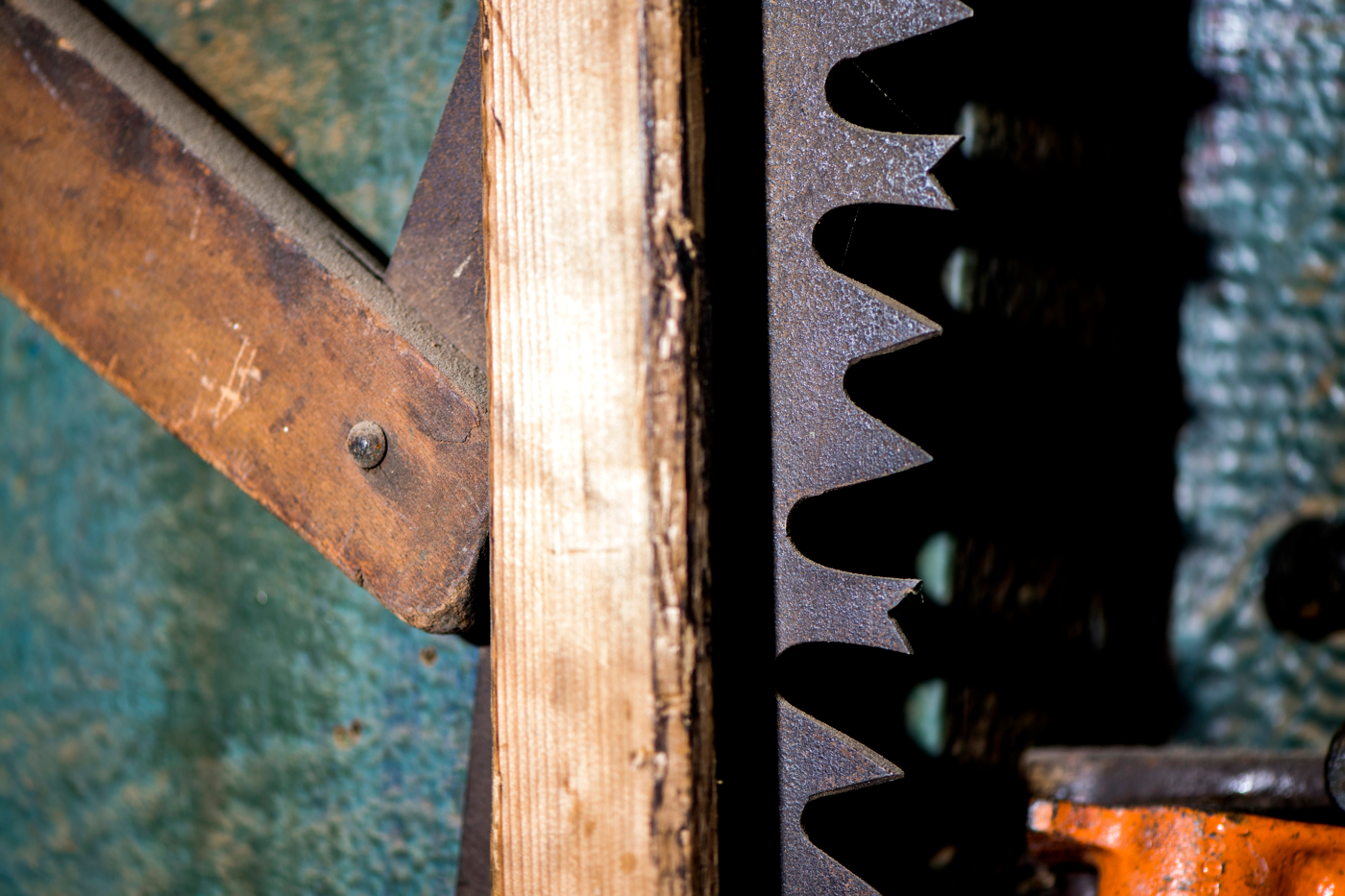
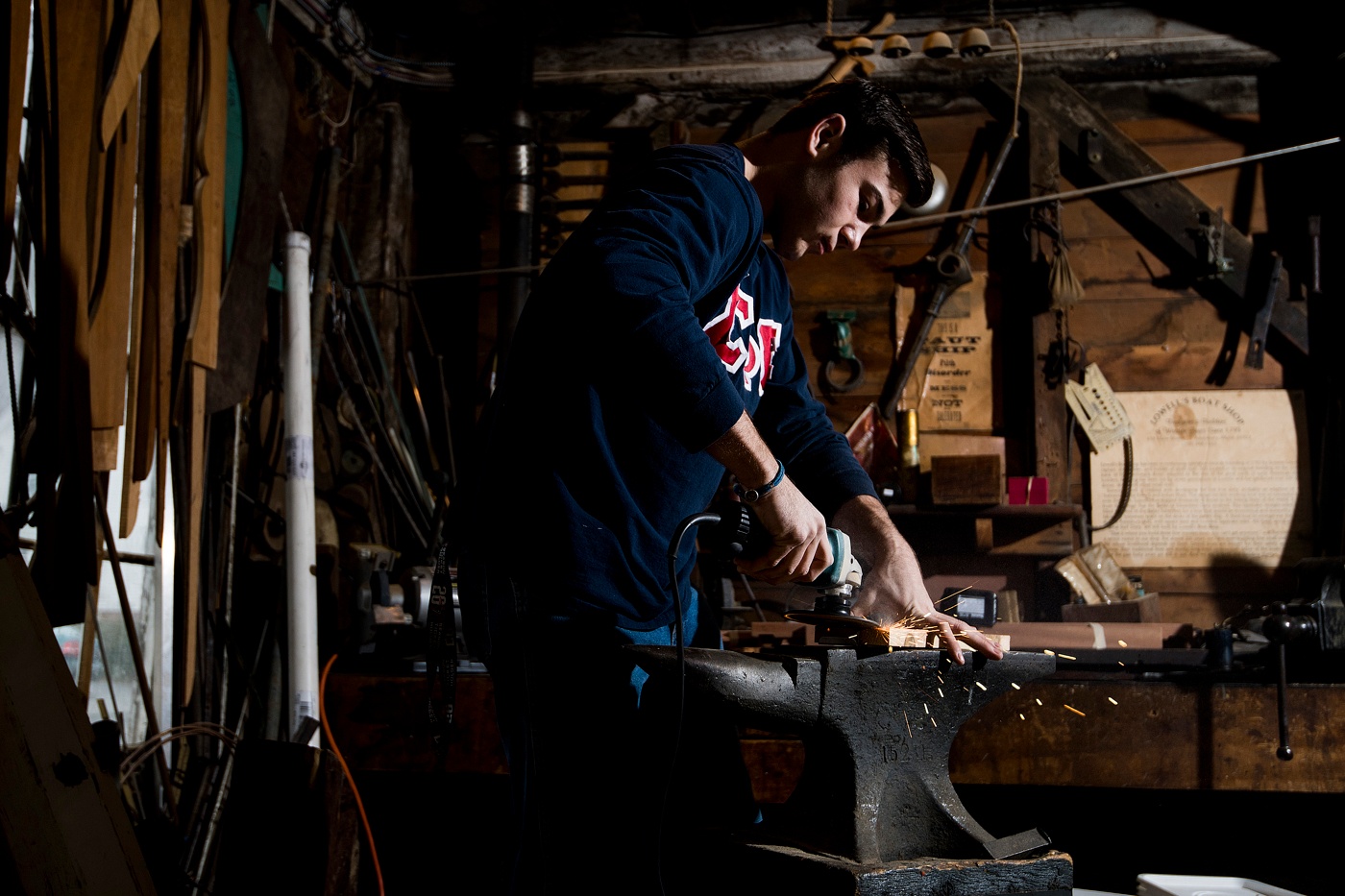

Essentially, Johnson needed to know if a tiny piece of metal wedged into his boat would cause it to break open and sink someday down the road. Whether, at some point, one step onto invisibly rotten wood would put his boot through the boat.
Johnson looked up which company manufactured the drill bit to determine what kind of metal the bit was, and whether that metal was susceptible to rust. It was.
He consulted with Graham McKay, the master boatbuilder at Lowell’s Boat Shop, to figure out the best way to deal with the mistake. Eventually, Johnson decided to dig out the drill bit by making a larger hole, then filling that hole with marine glue, an epoxy resin that hardens into a waterproof seal.
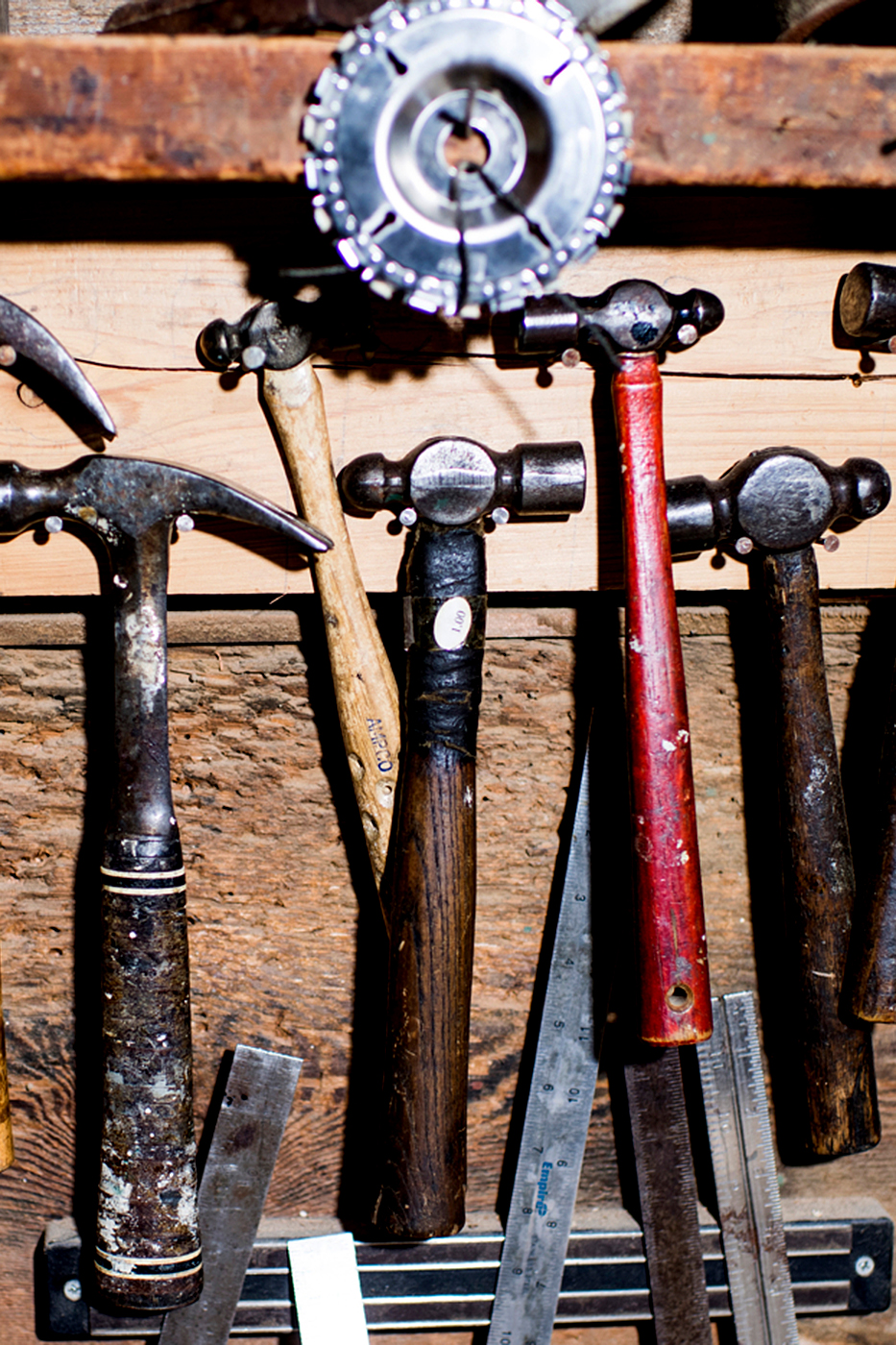
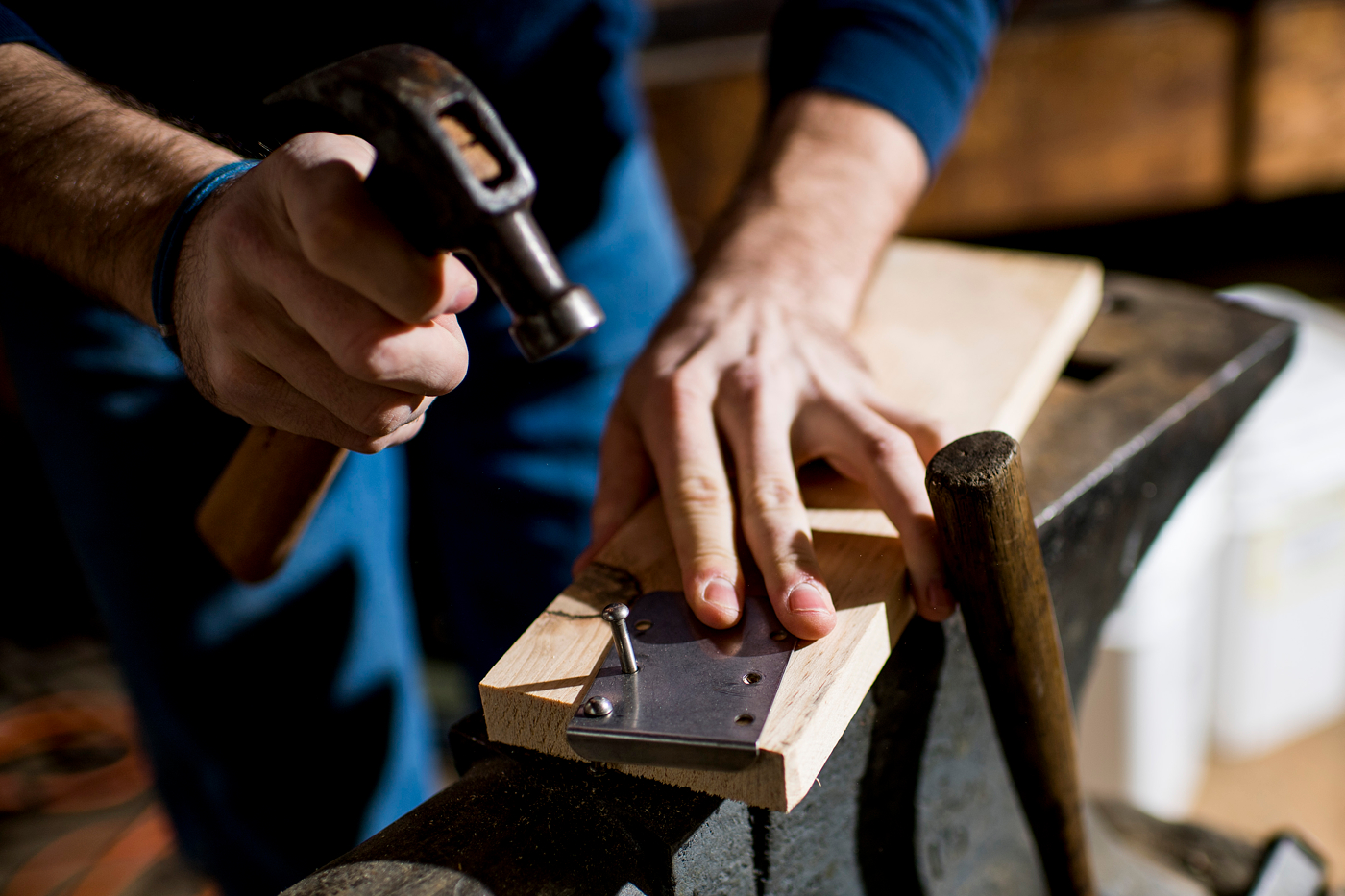

“That stuff has saved my life many a time,” Johnson said, telling the story months afterward on a bitter February day in Amesbury.
The skiff was the first boat Johnson built entirely himself, and he’s deeply proud of it. Once, on a summer afternoon sitting contentedly in the vessel’s smooth white interior, Johnson, his brother, and their dad caught a six-foot Atlantic Sturgeon (which they threw back).
Johnson said he has honed his approach to solving problems in mechanical engineering courses at Northeastern.
“I spend more time thinking about the problem and outlining a solution rather than jumping in head-first with what I believe is the best solution,” he said.
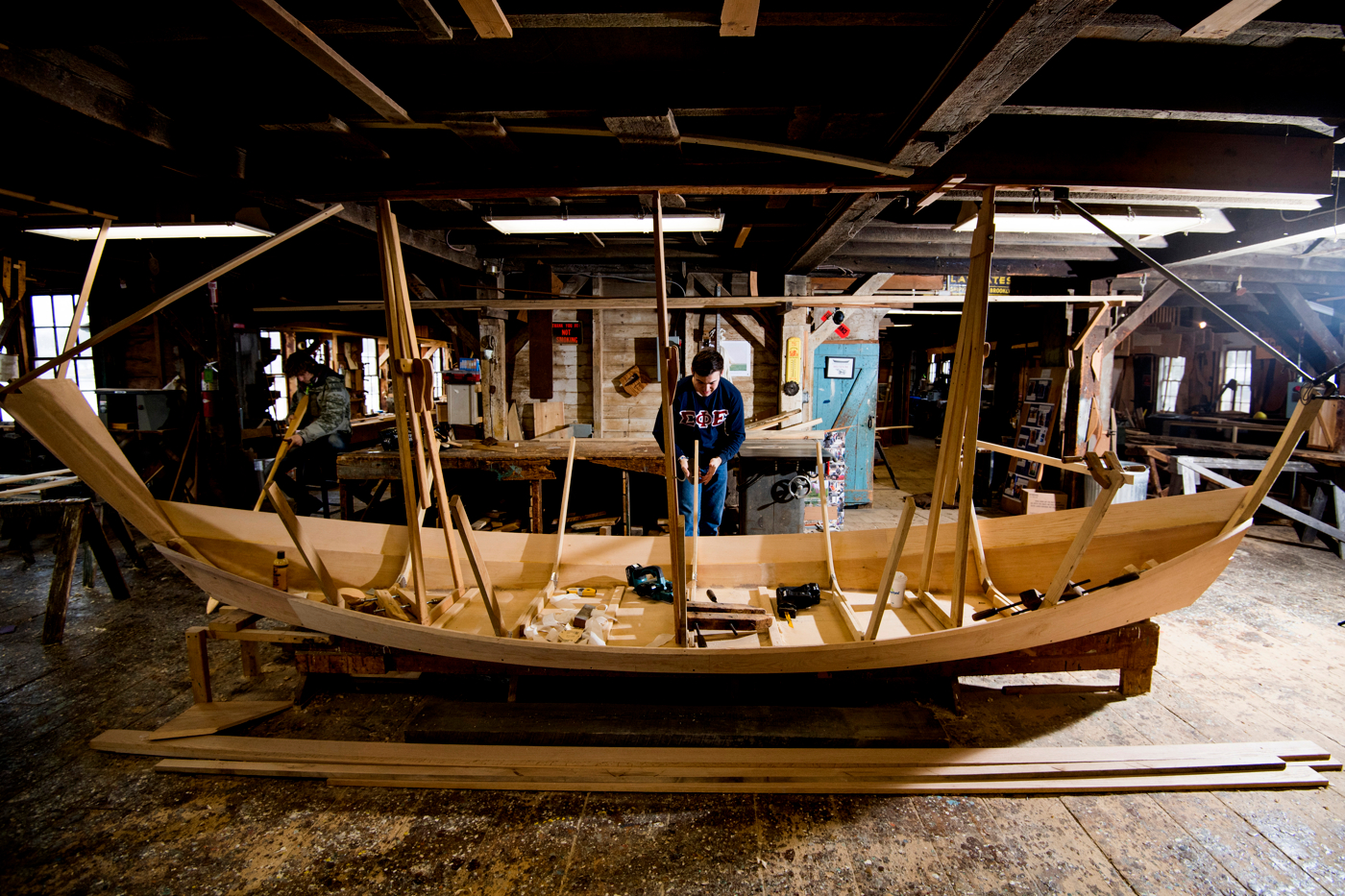
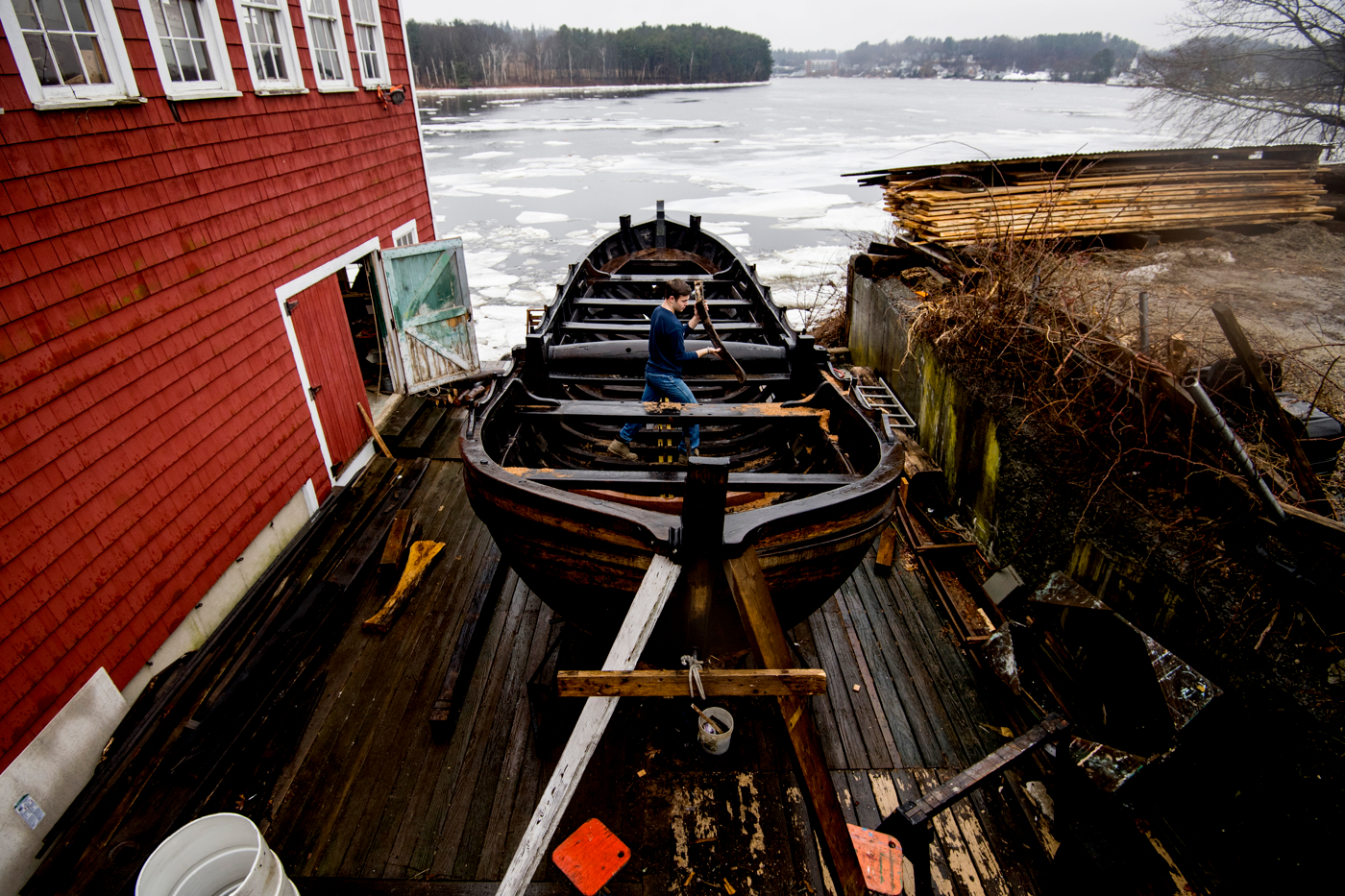
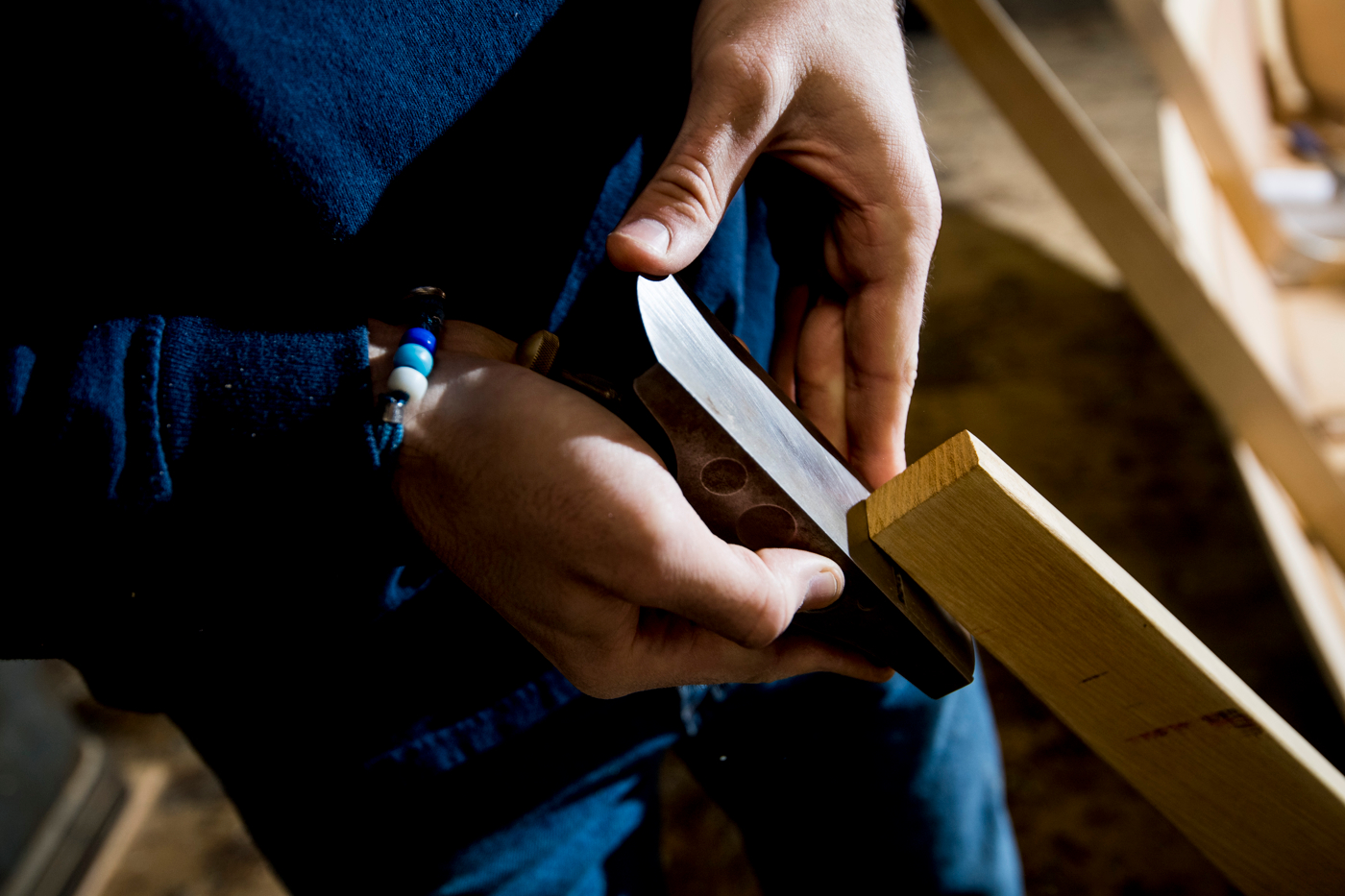
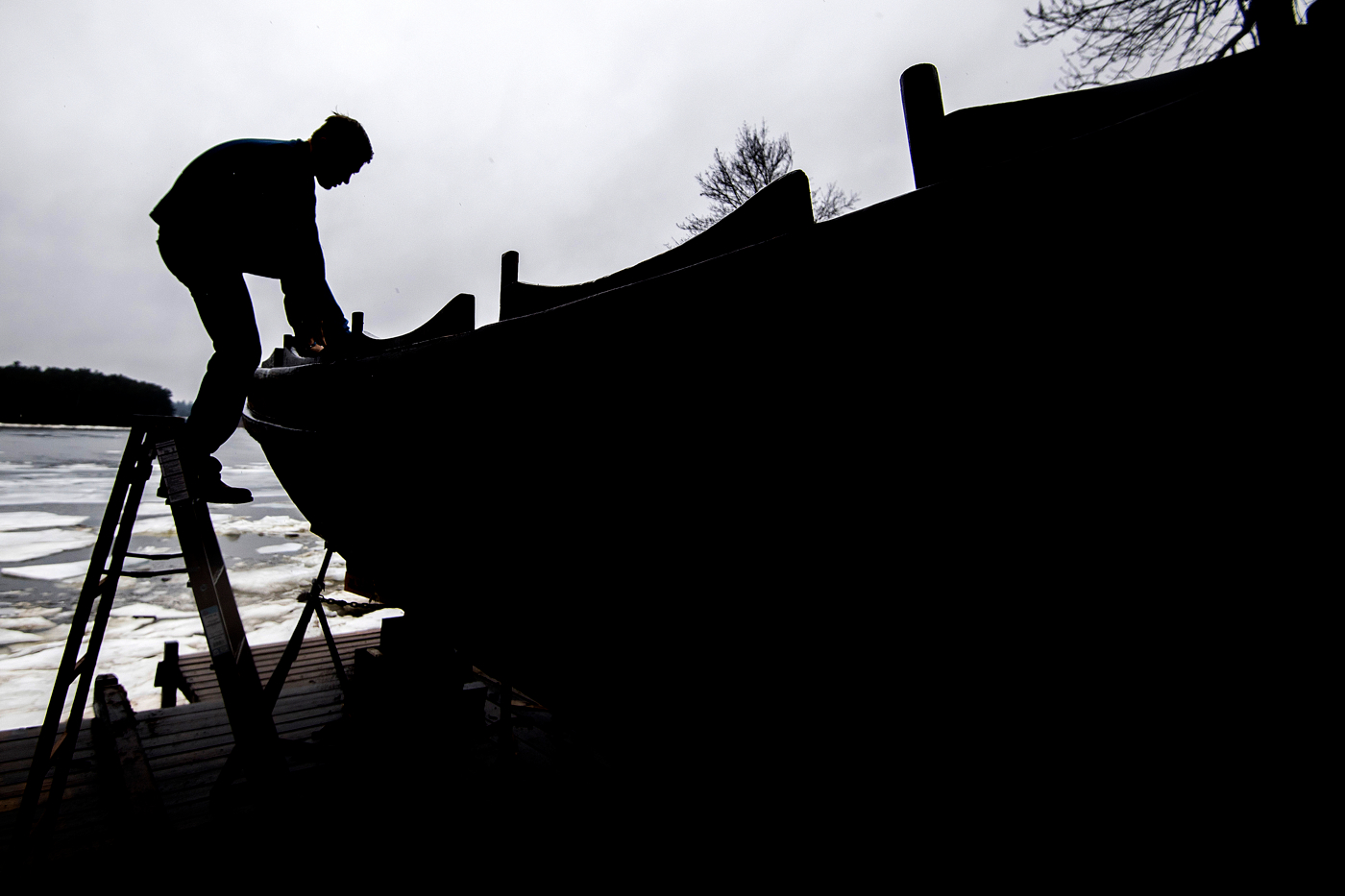
‘I’ll lose track of a whole day sometimes’
Johnson grew up near the water on the south shore of Massachusetts, but his family moved to the northern part of the state when he was in high school. One town over from his new home was Lowell’s, one of the oldest boat shops still operating in America. Johnson stumbled upon it in 2017 on a trip to the shop’s annual holiday open house.
Johnson was fascinated by what he saw. McKay, the master boatbuilder, suggested that Johnson come by the shop for a week to learn about the boat-building process. Johnson didn’t know much about building boats, but something pulled him in.
During that week, Johnson helped repair a rotted-out boat, learning about the vessel by taking it apart. Soon after, Johnson was accepted to the apprenticeship program.


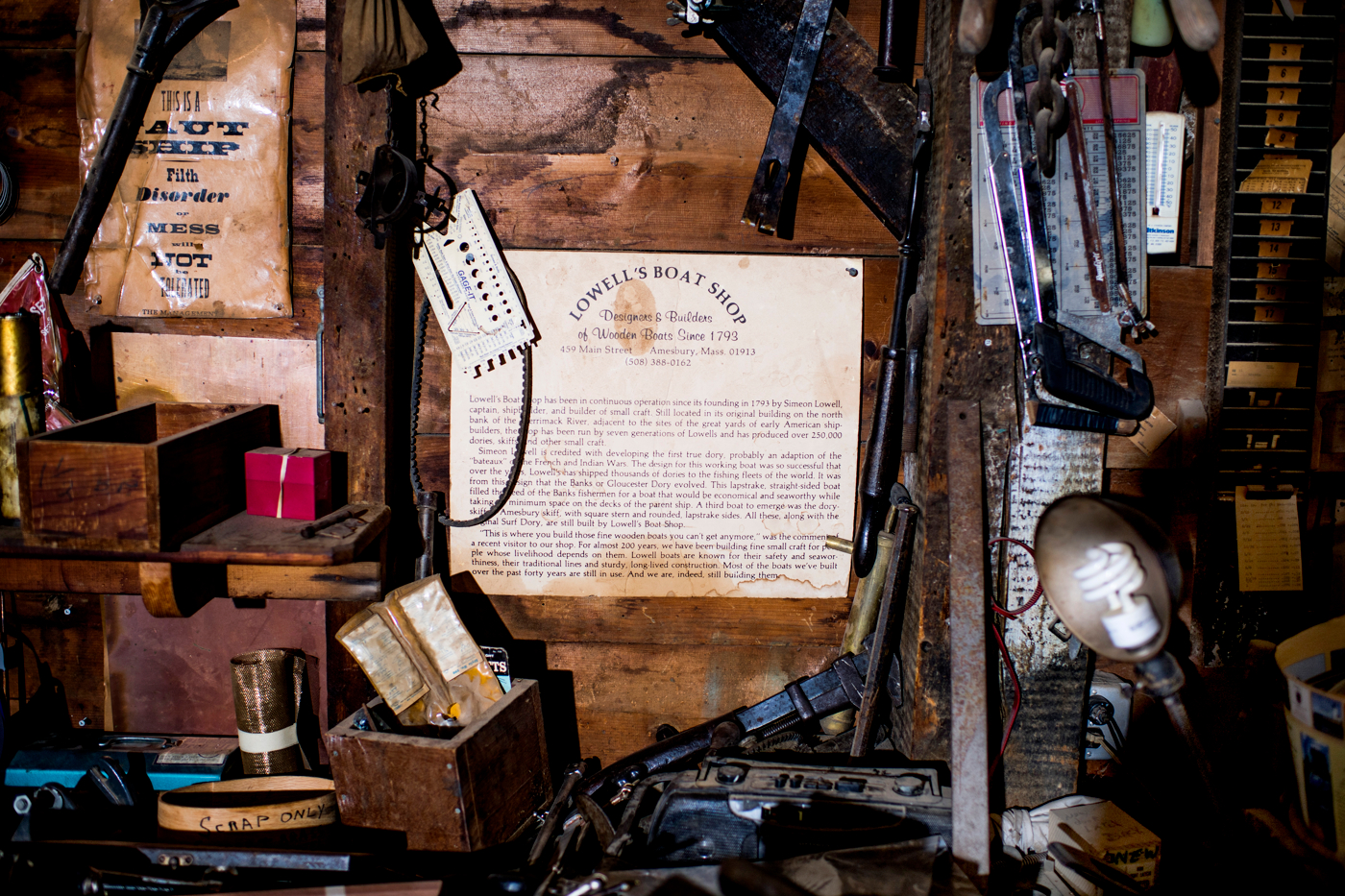
As it turned out, the process of designing and building boats helped Johnson realize he wanted to be a mechanical engineer and, ultimately, that he wants to work for a marine engineering company, he said.
Now, he helps teach newer apprentices in the shop, and serves as secretary on Lowell’s Maritime Foundation Board of Trustees in between classes at Northeastern. He’s working on the restoration of a replica of a small work boat stashed on The Mayflower.
“I love it here,” Johnson said, standing in the middle of the workshop. “I’ll lose track of a whole day sometimes, just sanding.”
It wouldn’t be hard to lose a day in Lowell’s; walking into the workshop is an assault on the senses.
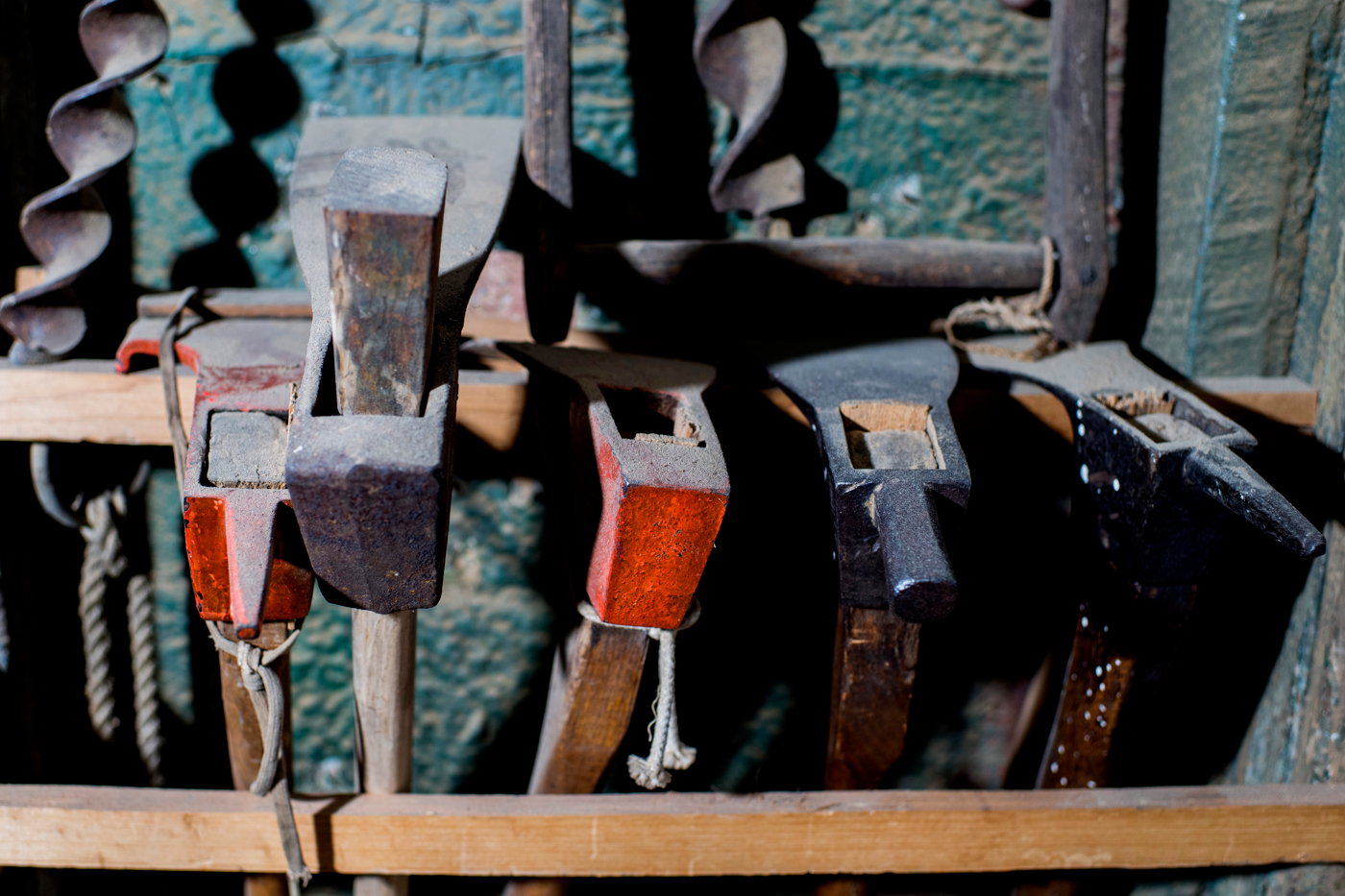
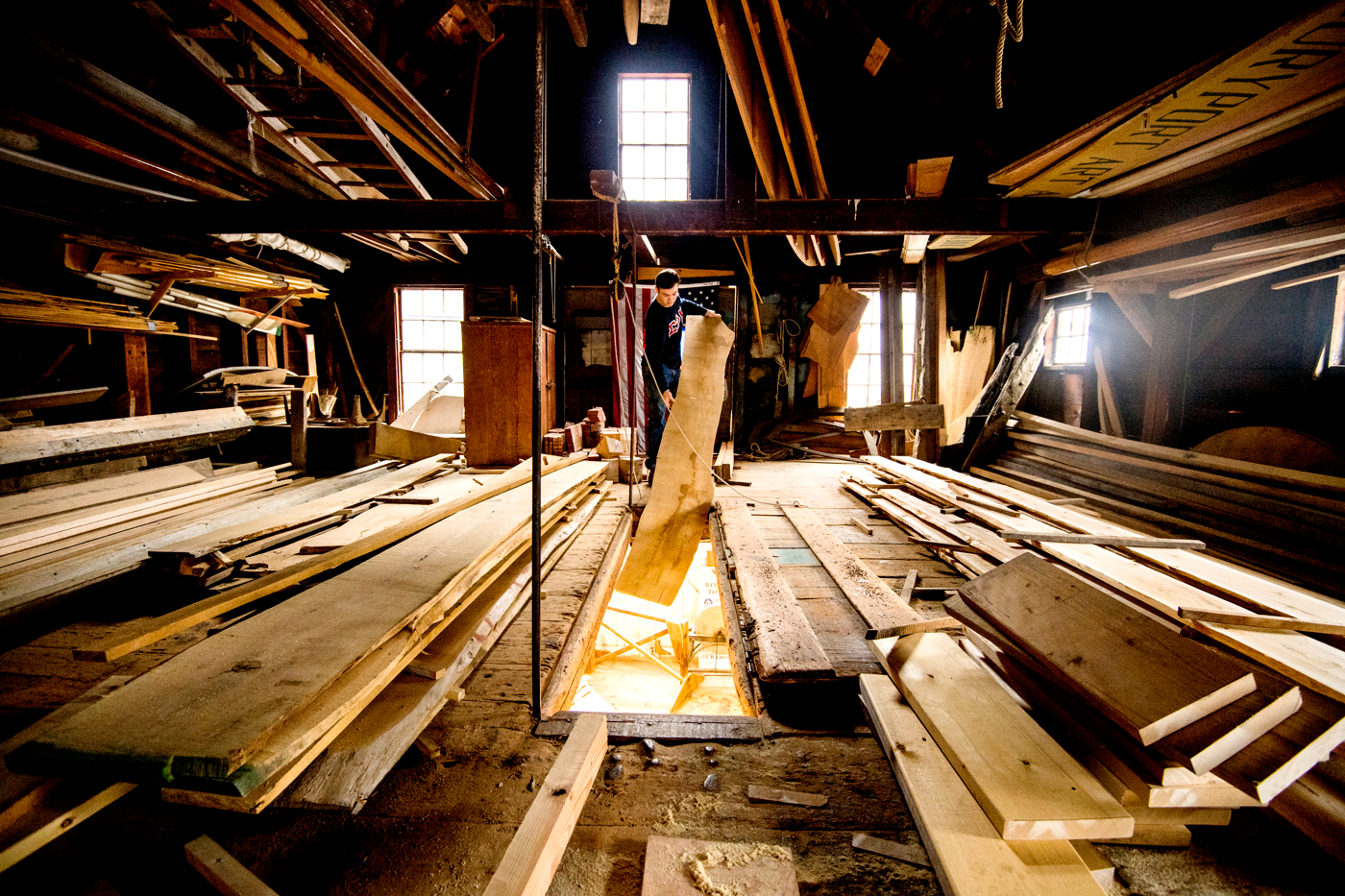
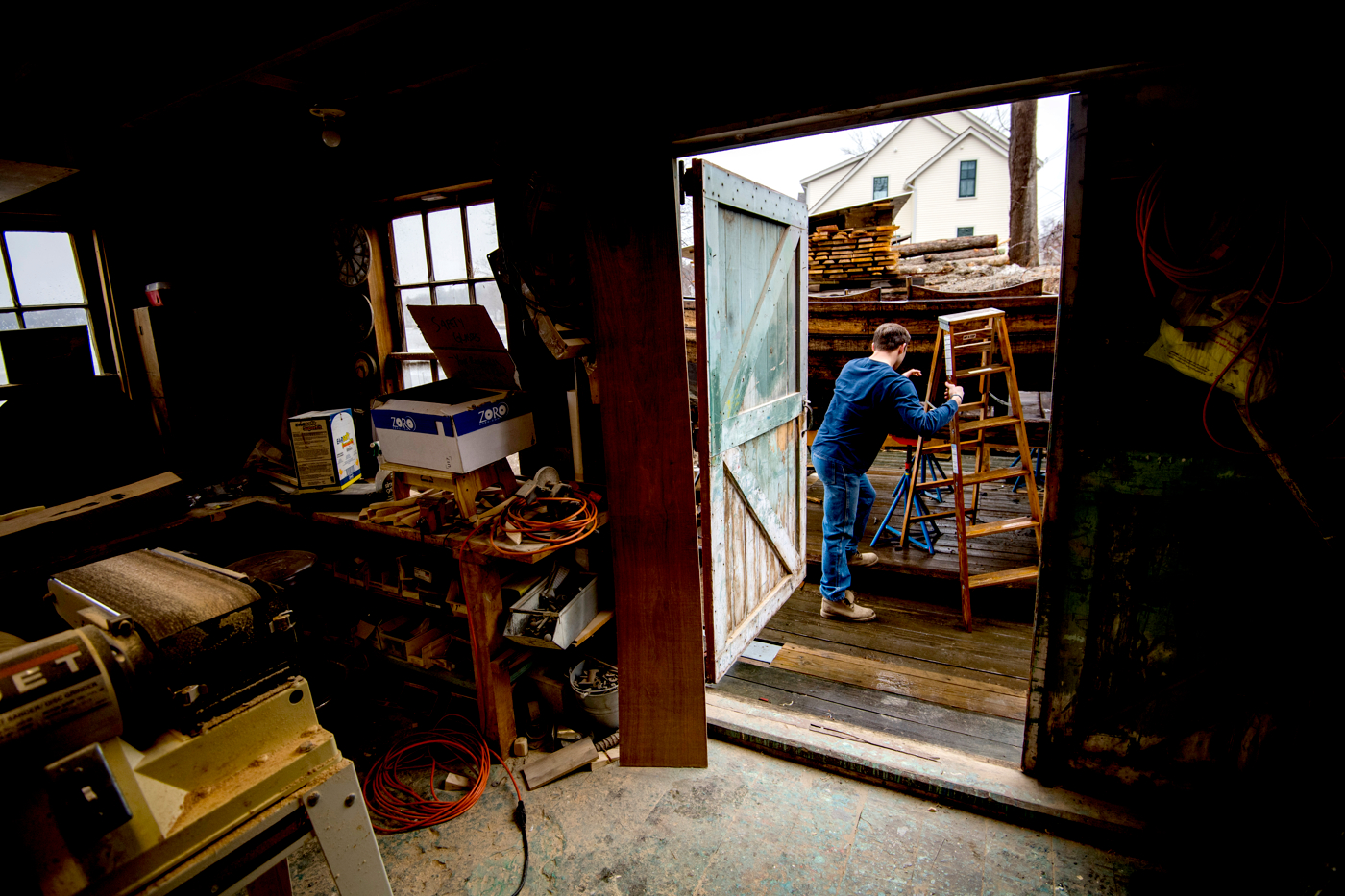
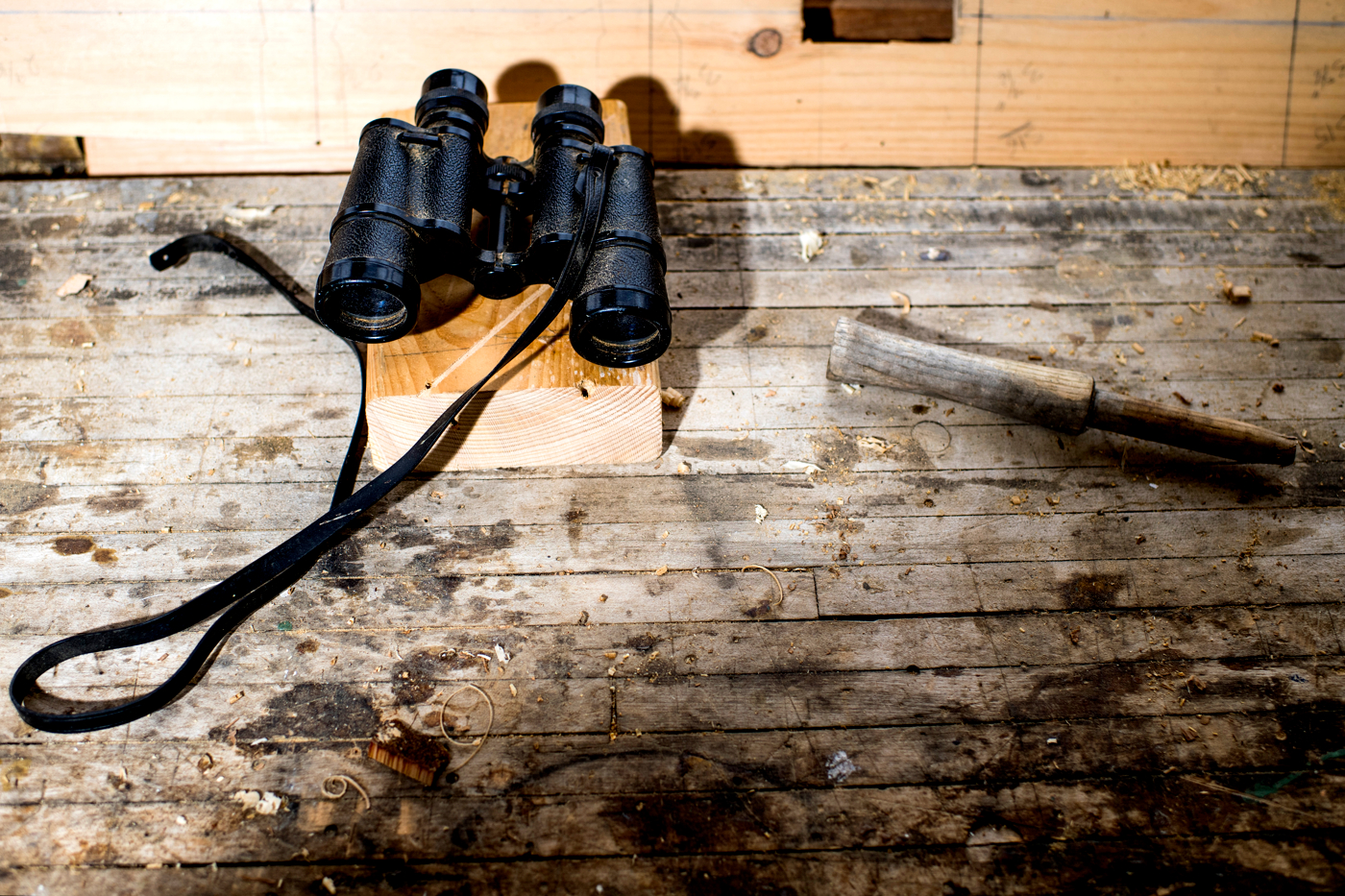
Rich history of boat building
On that February day, skiffs and dories in various stages of completion, like so many bleached whale skeletons, stood out among thousands of tools in a scene that would impress any I-Spy designer. The sharp, slightly burnt smell of freshly-cut wood hung in the air and caught in the back of your throat, though not in an unpleasant way. The wood floors were marbled with decades and decades’ worth of splattered paint and epoxy that’s been sanded down in paths around the workshop by years of shuffling feet. The building, located on the bank of the Merrimack River, is heated by a wood-burning stove, if it’s heated at all.

The wood floors in Lowell’s Boat Shop are marbled with decades and decades’ worth of splattered paint and epoxy. Photo by Matthew Modoono/Northeastern University
Working there, Johnson joined a rich history of boat building at Lowell’s that started when the company was founded in 1793.
In the 19th and 20th centuries, teams of boatbuilders would work in an assembly line to whip up six or seven boats a day and push them out a huge bay opening on the building’s east wall into ready hands on the ground below, where they’d be sold to fishermen up and down the Massachusetts coast.
An iron support beam inside the building became a makeshift measuring stick, where boatbuilders would notch how many vessels they’d made each year. In 1911, 2,099 boats were pushed out of Lowell’s.

An iron support beam inside the building became a makeshift measuring stick, where boatbuilders would notch how many vessels they’d made each year. In 1911, 2,099 boats were pushed out of Lowell’s. Photo by Matthew Modoono/Northeastern University
Production has slowed down dramatically since the shop’s heyday, but the tradition remains the same. Johnson builds boats now with tools that would be familiar to his 20th-century counterparts.
In the middle of the workshop was a skiff in the making. Johnson used a hand plane to shave off paper-thin layers of wood from the boat’s frame to get the angles just right.
Mixed in with these hand tools on workbenches and tables throughout the workshop are more modern tools, too, including power drills and electric belt sanders. Empty Greek yogurt containers hold epoxy. Parts of the building have been turned into a museum and a gift shop, where Lowell’s sells things such as boat-shaped flower boxes and nautical coffee mugs.
Amidst all the sensory chaos, Johnson found a sense of peace.
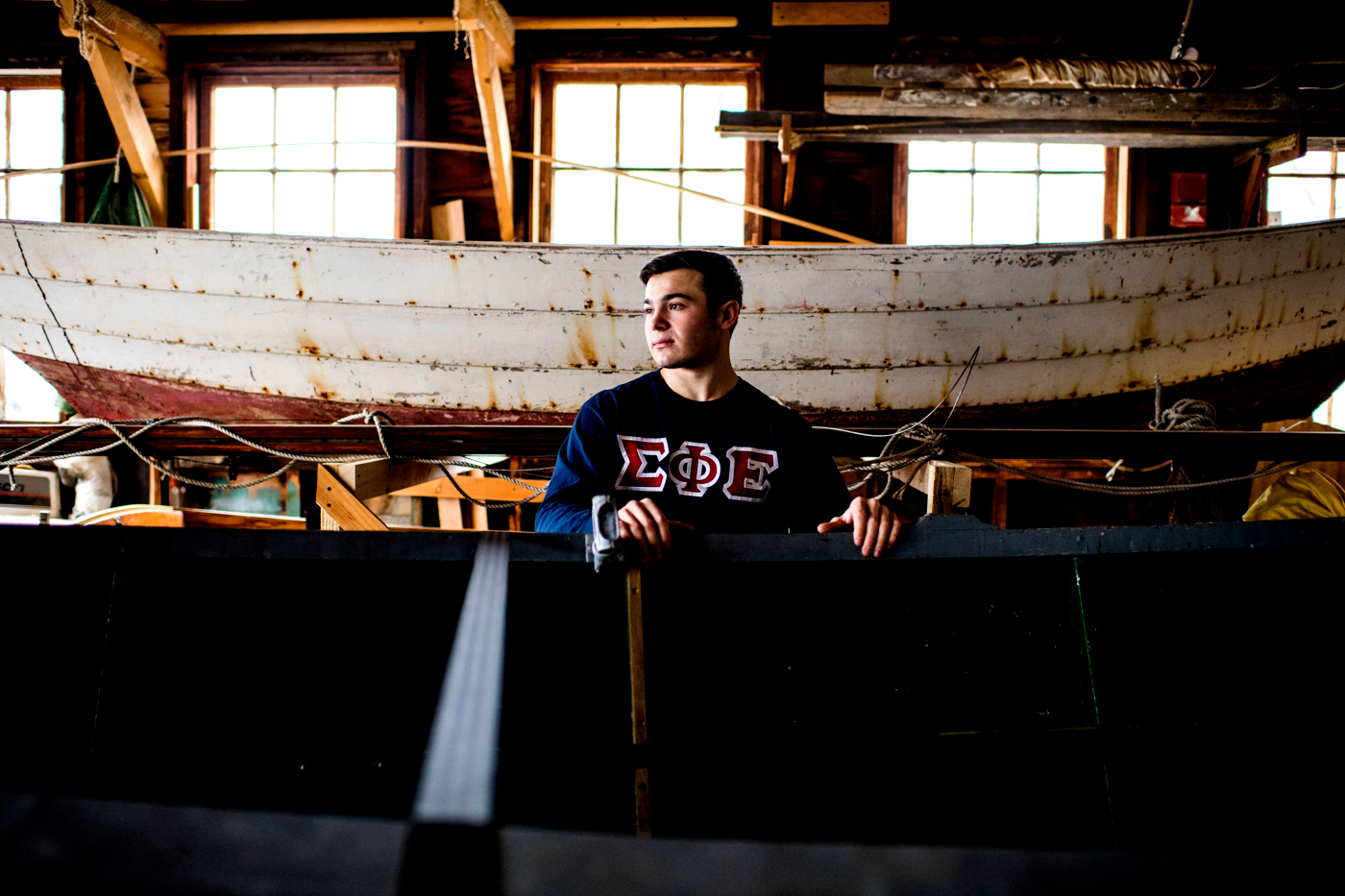


Johnson’s 16-foot long point skiff. Courtesy photo Will Johnson
“You get into a flow state, almost,” he said, of days spent building boats. “I’ve heard of runners getting a ‘runner’s high’ during a really good run, and sometimes I’ll get like a boatbuilder’s high, when everything is lining up just right and fitting together perfectly. It’s amazing.”
And Johnson said he’s learned something, too; something bigger than how to keep a boat afloat. He learned something about all those mistakes we make and fix along the way.
“Boat-building is sort of like life, in that way,” he said.
For media inquiries, please contact media@northeastern.edu.




